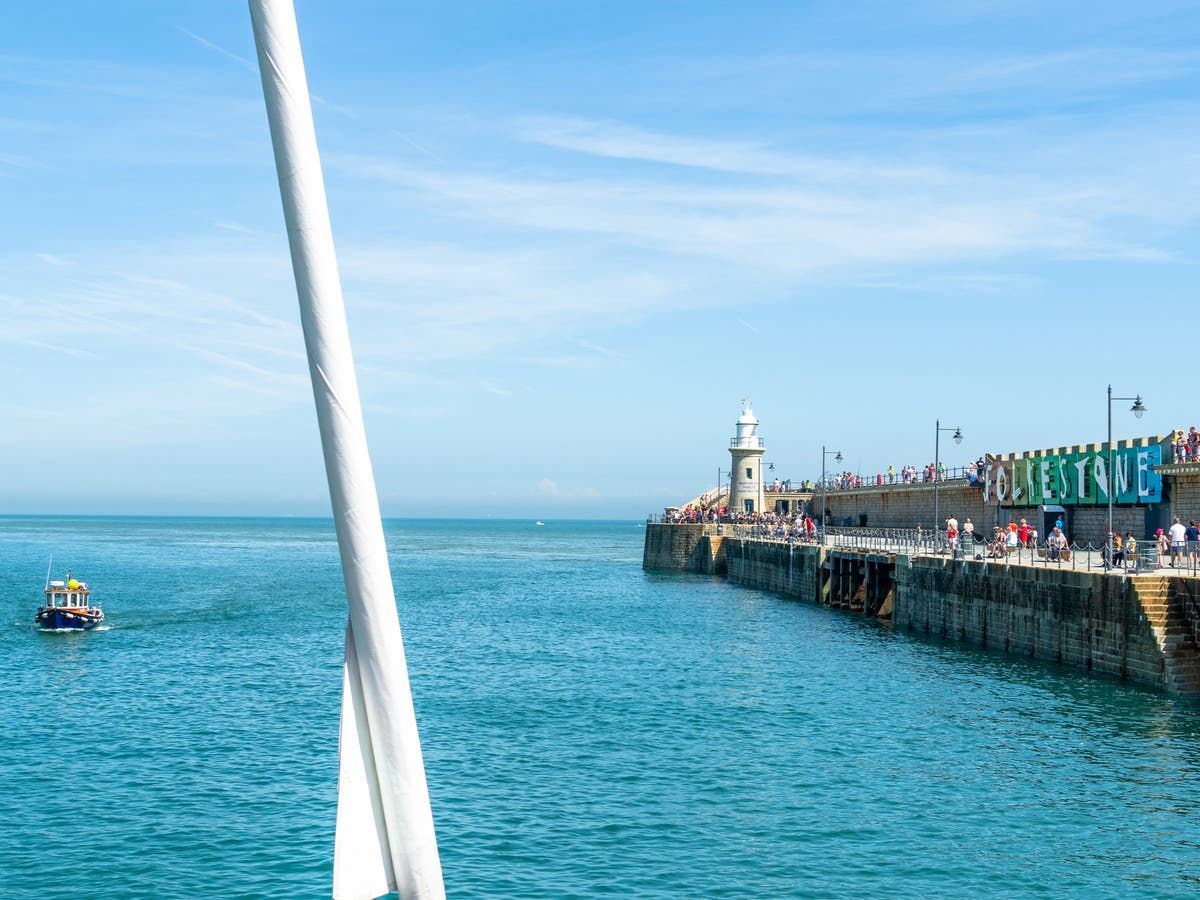tThis weekend I had the strange experience of reading about my city in a national newspaper. “The true model of modern regeneration for orderly and stylish living,” they called it, fawning over the “public art on every corner,” the “original shops,” the “colorful old high street,” and the “buzz” that accompanies.
It provoked a mix of emotions. On the one hand, pride: people are seeing what Yo see! My daughter finally had it She is all that Makeover and she's competing for prom queen! On the other, an unholy fear, because that popularity can only bring one thing: skyrocketing prices.
What has caused this slight existential crisis is that, for the first time in my life, I live in one of the most desirable destinations in the United Kingdom. That is according to The timesIn any case, they have just named Folkestone the best place to live in the South East in their recently published annual ranking for 2024.
The profile of this creative hub on the Kent coast that is home to the Chunnel (Channel Tunnel) has been growing steadily over the last five to ten years, and this latest accolade has given it mainstream status throughout ruler. A city crowned 'best' in a category that includes traveler favorites St Albans and Tunbridge Wells, plus the former king of sleepy seaside Brighton, is no longer officially hiding its light under a bushel.
But while media attention can obviously be a blessing, popularity – and particularly superpopularity – often comes at a cost, both literally and metaphorically. Does overexposure risk jeopardizing all the things that made a place great in the first place?
This tension of gentrification was clearly summarized recently when two friends of mine got into a somewhat heated debate about its effect on Folkestone. One was to point out the positives: it attracts people with disposable income, which helps sustain multiple independent businesses in the area from which we all benefit. The other, who currently rents but dreams of buying a property, argued that the “buzz” of the city is attracting developers and second home owners, discounting locals. “How many more people from London do we need to move here?” -he asked in disbelief. “When will it be enough, enough?”
At this point I just sheepishly shuffled my feet: I'm very much part of the problem. First of all, I was that Londoner looking for a fresh place to start again; or, as we are called in these parts, with an occasionally hostile undertone, a “DFL” (Down From London). I also understand my friend's frustration better than most. When I started considering buying a house in Folkestone, back in 2018, it was incredibly affordable (part of the distinctive charm). Fast forward to 2021, when I was actually in a position to move and the supercharged post-lockdown housing market had gone into overdrive. 18 months passed between the start of my search and my move here: 18 months in which I spent every weekend watching; made countless “best and final” offers that were outbid by cash buyers who would do mediocre “renovations” and have those homes back on the market six months later; and four different offers were accepted before the purchases fell through.
Mermaid Beach in Folkestone
(Helen Coffey)
It speaks to a bigger problem: whether Londoners are moving out of the city because they can't afford to move up the property ladder, driving up prices in suburban towns as a result, which in turn drives out locals. … Whats Next? What is the best way to deal with the domino effect of the real estate crisis?
I am also part of the problem because I have made my fair share of praises about Folkestone's appeal in the national press. My move was prompted by an article I wrote about it being “cooler than Margate” after I visited six years ago, and since then I have waxed lyrical about making friends here, praising it as the best holiday destination at home and I have done a deep investigation. Immerse yourself in the healing powers of our local community sauna. I'm a Folkestone fan and that has extended to my work.
I never really thought about the impact all that could have until recently, when an acquaintance asked me, half-jokingly, to “stop writing about how wonderful it is here until after I've managed to buy a flat, please… Every time someone publishes an article, I have to save another £5,000 for my deposit.”
Does overexposure risk jeopardizing all the things that made a place great in the first place?
I am not so arrogant as to think that I am solely responsible for the momentum of the real estate market. But the wave of recognition that has seen Folkestone move from an “up-and-coming” seaside town to an “up-and-coming” one has resulted in a dramatic change. In March 2014, the average property price in Folkestone was £186,227. By August 2023, it had risen almost 86 per cent to £343,808.
Popularity also has other drawbacks. Roger de Haan, the former Saga chief executive whose money has been the driving force behind Folkestone's stellar regeneration, has courted controversy in recent years with plans for a series of luxury housing developments on the seafront. One has already come under fire for creating a wind tunnel that emits deeply unpleasant, banshee-like screeching noises every time a gust picks up. Another will be built in Harbor Arm, taking the place of popular drinking and dining venues, stalls selling products from local independent businesses and seating areas where people can simply hang out in the sun and enjoy the sea views .
These new properties are all high-end, too expensive for most locals to afford: one-bedroom flats at the Shoreline Crescent development currently start from £430,000; A four-bedroom beach house is on the market for £2.15 million.
The Shoreline Crescent development has caused controversy locally.
(Alamy Stock Photo)
De Haan was also responsible for creating the Creative Folkestone charity foundation, whose robust and thoughtful artist-led model of gentrification attracted countless newcomers to the city. The trust bought several derelict buildings, converted them into living and working spaces and invited people to apply to rent them at a subsidized rate. The idea was to build a creative community, keeping these rents below market value to ensure that the artists who would help make Folkestone a capital “D” destination would not be left out once they had made it fashionable. Unlike places where gentrification through art has occurred organically and unintentionally (Shoreditch, east London, is a prime example), there was a failsafe to prevent it from turning into a shiny corporate nightmare. and without soul. But even this plan seems to have been diluted in recent years thanks to its popularity.
One local writer and director tells me he moved to Folkestone specifically for Creative Folkestone's living spaces; You were initially quoted a starting price of £450 per month to rent a flat in 2021. A quick scan of the website today shows all available properties costing £1,050 per month. He now feels completely disillusioned. “The promise of ‘cheap rent for artists’ was the biggest factor in my decision to move to Folkestone,” he says. “But in reality, it is now cheaper to rent privately than through Creative Folkestone. And rents are going up faster than I can keep up; “The cheapest apartments have almost doubled in price since I came here almost two and a half years ago.”
Rents are going up faster than I can keep up; The cheapest apartments have almost doubled in price since I got here.
local creative
Meanwhile, as with all gentrification, there is the thorny issue of a growing divide between the original residents and the influx of new people attracted by all the hype – a divide that often arises from income inequality. Folkestone and Hythe have the third highest youth unemployment rate of any area in Kent, with 7.8 per cent of 18-24 year olds currently out of work (3 per cent higher than the county average). Around 33.3 per cent of children in the constituency were living in poverty in 2021-22, according to data from the charity Action For Children. As Rhys Griffiths writes in a moving article for kent online“The challenge now is to ensure that the community does not become too divided between the haves and the have-nots.”
Don't get me wrong: the city still has a lot to recommend it. I'm still a fan of Folkestone 4eva. But maybe being crowned one of the “best” places to live isn't the hard part; Perhaps the complicated part is what comes next. Prom night is over – now it's time to find out what the future of Folkestone will look like.












